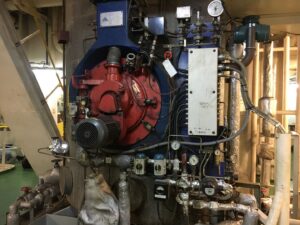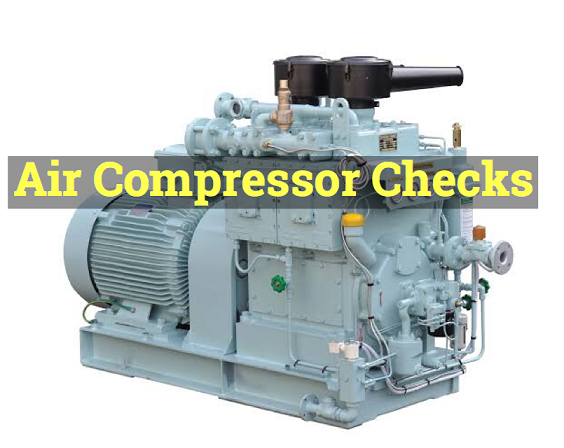Different type of safety valve on boiler are mentioned in this article and hope you will find this article interesting.
Here is the list of all the types of safety valves that might be present on the boiler.
Different type of safety valve on boiler
Full lift safety valve:
This type of safety valve has a spring that is designed to lift the disk completely off the seat, allowing the maximum flow of steam. The full lift safety valve is suitable for high-capacity boilers and applications where rapid pressure relief is required.
The lift of a full lift safety valve is equal to the full bore diameter of the valve. Therefore, if a safety valve has a bore diameter of 2 inches, for example, a full lift safety valve would have a lift of 2 inches when it opens.
It’s important to note that the specific lift and bore diameter of a safety valve will vary depending on the specific design and application of the valve. Additionally, the lift capacity of a safety valve must be carefully matched to the pressure and flow requirements of the system to ensure proper operation and prevent overpressure situations.

High lift safety valve:
The high lift safety valve has a spring that is designed to lift the disk higher than the full lift safety valve, allowing a greater discharge capacity. High lift safety valves are suitable for boilers with a high specific volume, such as those using superheated steam.
The specific lift for a high lift safety valve in a boiler can vary depending on the design and application of the valve, but typically, a high lift safety valve has a lift of 20% to 40% of the valve’s bore diameter. This increased lift allows the valve to discharge more fluid at a faster rate, which is beneficial in high-pressure applications where a rapid reduction in pressure is necessary to prevent damage to the system.
For example, if a safety valve has a bore diameter of 2 inches and a high lift percentage of 30%, the valve would lift 0.6 inches (30% of 2 inches) off its seat as it opened. This increased lift distance allows the valve to discharge more fluid at a faster rate, helping to quickly reduce the pressure in the system and prevent damage. However, it’s important to note that the specific lift percentage for a high lift safety valve can vary depending on the specific application and system requirements.
Low lift safety valve:
The low lift safety valve has a spring that is designed to lift the disk only a short distance off the seat, reducing the discharge capacity. Low lift safety valves are suitable for low-pressure boilers and applications where gradual pressure relief is required.
Superseded safety valve:
The superseded safety valve has a spring that is designed to lift the disk in two stages. The first stage allows a partial lift of the disk, while the second stage allows a full lift. Superseded safety valves are suitable for applications where a gradual increase in pressure relief is required.
Balanced safety valve:
A balanced safety valve has a spring that is balanced against the steam pressure acting on the valve disk. This design allows for greater accuracy in pressure relief and reduces the risk of chattering or instability.
In summary, spring-loaded safety valves on boilers are designed to prevent overpressure and ensure safe and efficient operation. The choice of the type of safety valve depends on various factors such as the boiler size, pressure, and application. Proper selection, installation, and maintenance of safety valves are critical for safe and reliable boiler operation.
advantage of full lift safety valve
The full lift safety valve has several advantages over other types of safety valves used on boilers, including:
High-capacity relief: The full lift safety valve is designed to lift the disk completely off the seat, allowing for the maximum flow of steam. This design provides high-capacity relief and ensures that the boiler pressure is relieved rapidly in the event of an overpressure condition.
Quick response time: The full lift safety valve responds quickly to overpressure conditions, which is essential for preventing boiler explosions or other catastrophic events.
Easy maintenance: Full lift safety valves are easy to maintain and repair, which is critical for ensuring the safe and efficient operation of the boiler.
Reliable operation: The full lift safety valve is a proven and reliable design that has been used for many years in various types of boilers.
Compliance with regulations: Full lift safety valves are compliant with various national and international regulations and standards, ensuring that the boiler system meets the necessary safety requirements.
In summary, the full lift safety valve provides high-capacity relief, quick response time, easy maintenance, reliable operation, and compliance with regulations. These advantages make the full lift safety valve an ideal choice for high-pressure boilers and applications where rapid pressure relief is required.



